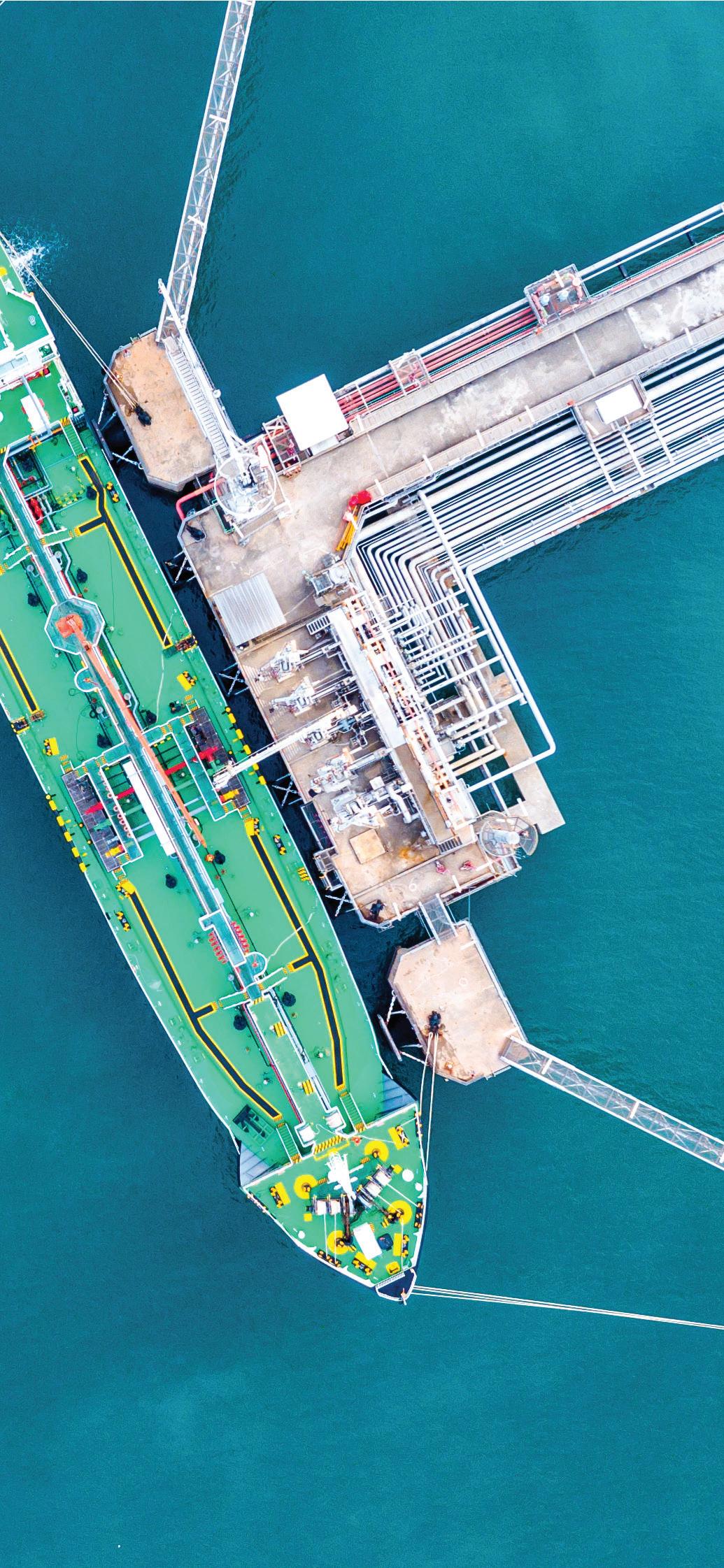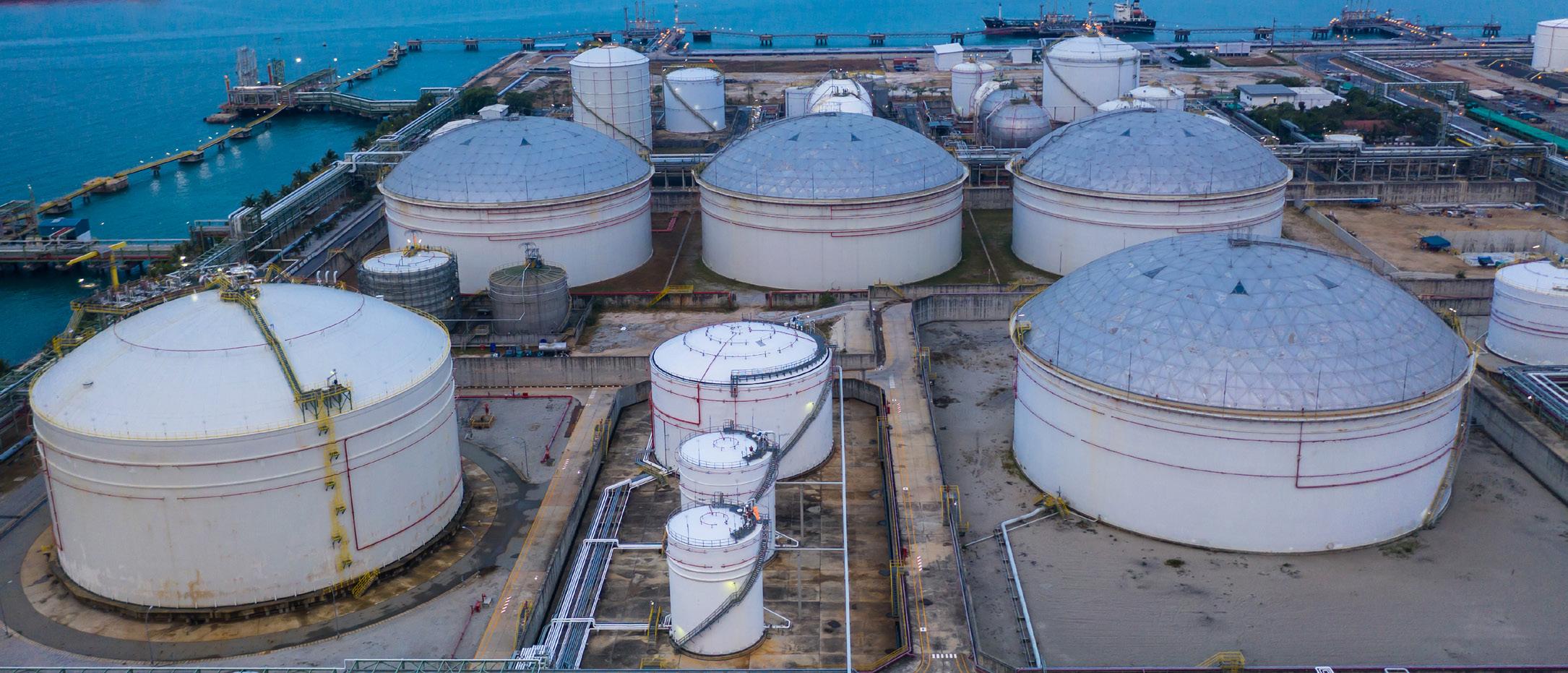
Case Study
Edge Computing in Midstream Oil & Gas
How one EPC firm deployed Stratus ztC Edge™ to provide 100% uptime for an Oil & Gas customer’s liquid natural gas (LNG) terminal operations and pipeline monitoring
Challenges
• Ensure 100% uptime for monitoring of LNG pipeline and terminals
• Provide visibility on operations across onshore, offshore, and enterprise locations
• Deploy new system quickly and safely using remote staff
• Develop scalable and repeatable Rockwell Automation-based monitor and control architecture
Solution
• Stratus ztC Edge™
• Rockwell Automation® FactoryTalk® Site Edition
• Rockwell Automation Historian
• Rockwell Automation Thin Client® server with six thin clients
• Engineering workstation
Benefits
• Replaced duplicate systems with a single Stratus ztC Edge computing platform
• Eliminated unplanned downtime by 100%
• Enabled new levels of reporting to help drive end-client business decisions
• Increased safety with automatic shut-off at the pipeline and the ship
• Delivered new system 20% faster
• Reduced aftermarket support by 50%
A leading engineering, procurement, and construction (EPC) firm specializing in onshore and offshore pipeline operations provides clients a wide range of engineering and project management services for the gathering, transmission, and processing of hydrocarbon products.
Because of their proven success within the industry, the firm was selected by a global liquified natural gas (LNG) company to connect an offshore floating production storage and offloading unit (FPSO) to onshore assets supplying LNG to two sites in the Caribbean. The EPC firm designed subsea pipelines that ran three miles undersea and four miles onshore to a power generation station that powers a third of one Caribbean Island as well as to boilers powering a large aluminum plant.
Using Penguin Solutions® Stratus edge computing platforms, the EPC firm met the midstream Oil & Gas company’s requirement of 100% uptime for LNG monitoring of terminal operations. They consolidated offshore and onshore monitoring systems into a fault-tolerant Stratus platform, sharing information between systems via thin clients. The solution they chose provided accurate measurement and data sharing between the FPSO and onshore terminal and brought visibility to the organization’s headquarters.
With Stratus edge computing platforms, the EPC firm delivered the solution to the LNG company 20% faster, enabled remote management of the system, and reduced aftermarket support by 50%. Thin clients running on the Stratus platform provided real-time remote access to data, reducing the need for on-site staff by 50%.
In the three years since the Stratus platforms were implemented at the Caribbean sites, the LNG firm has experienced zero downtime in its LNG monitoring system.

Centralizing monitor and control for offshore and onshore LNG operations
To supply LNG to the two sites in the Caribbean, the midstream Oil & Gas company operates a FPSO platform alongside a gas reclassification ship connected via subsea and onshore pipeline. The pipeline travels three miles undersea and four miles onshore to provide LNG to power one-third of a Caribbean island nation as well as a bauxite manufacturing plant. The EPC firm designed and constructed the pipeline and terminals in 2019 with a control and automation architecture using Rockwell Automation, standard PCs, and a centralized historian connected via web access to the terminals and at the FPSO. Systems at both sites analyzed the same physical assets, duplicated the humanmachine interface (HMI) control system, and shared input/ outputs (I/Os).
Although this approach proved effective for monitoring assets from dual locations, any time an update was required on one system, the team would have to make the same update on the other system. Over time, the systems became less practical to maintain, which in turn increased system downtime. Running applications on standard PCs that were less than reliable also led to more downtime and required more frequent upgrades.
Standardizing control with Penguin Solutions Stratus ztC Edge and Rockwell Automation
In need of 100% uptime for monitoring their LNG terminal operations, the LNG company turned to the EPC firm to upgrade its original control architecture, standardize the new architecture on Rockwell Automation, and apply it across their other Oil & Gas assets.
The EPC firm recommended centralizing the two locations and consolidating software onto a Stratus edge computing platform. The team selected the Stratus ztC Edge compute platform in a paired configuration (dual node deployment) to provide fault tolerance. Using the platform’s built-in virtualization, the team installed five virtual machines (VMs), a historian, a thin client server, a storage engine, and the main controller. They also added six thin clients to run the engineering workstation so that the platform could deliver the status of the pipeline system and the terminals to the reclassification ship.
The different sites and the bauxite plant communicate via a redundant wireless connection and a fiber network with automatic failover in case either connection is lost. In one instance, the fiber network went down and the system continued to operate flawlessly on wireless.
The way the Stratus ztC Edge platform tied in with the Cisco switch and Cisco firewall. It was really seamless. There were no issues.
Vice President of Automation and Engineering

Fast deployment and remote commissioning with Penguin Solutions
Using Stratus ztC Edge, the EPC firm commissioned the new control architecture quickly despite challenging circumstances. The simplicity of the Stratus ztC Edge platform reduced server configuration time by 20% and acted as a control mechanism for several functions during the process. The EPC firm also built in a mass-balance application so that the LNG company could compare flow meters from the ship to those onshore. If discrepancies were detected, the platform could shut down the process to allow operators to course-correct. The Stratus platform also enabled the EPC firm to implement a shut-off mechanism that would halt the process at either the pipe or the ship, depending on the location of the issue, and automated a temperature profile function between the pipeline going underwater and coming on shore to monitor for leaks.
Commissioned in stages, the new control system and combined heat and power (CHP) system were completed first, followed by the boilers. The latter phase took place during the COVID pandemic, which required the team to commission the plant remotely. The EPC firm enabled an Apple iPad and a Galaxy Tab as a thin client in the system, allowing a technician to calibrate and troubleshoot remotely since the control room wasn’t in operation. Following the success of the remote plant commissioning, the team applied the same approach for teams managing turbine operations, reducing the need for on-site operations monitoring by 50%.
Operational visibility with no downtime
With monitor and control running on the paired Stratus ztC Edge nodes, the platform collects and historizes all data on flow and the performance of the power generation turbines. A report-build function then allows the LNG company to generate local reports and push the information to their headquarters.
The processing power of the edge computing platform means that everything that happens in the terminal, the power plant, and the gas supply can be captured and shared via comprehensive reports.
From there, employees can download crucial data into the company’s corporate business systems, making it easy to handle accounting and forecasting tasks.
Using Stratus edge computing saved me a lot of time, heartache, and headache. It has reduced my mean time to provide a system by about 20%. It reduced my aftermarket support by about 50%. During the warranty period, there were very little—if any—issues with the system. No patching or updates for three years. We were impressed with the way Penguin Solutions identified the problem before we were even aware of it.
Vice President of Automation and Engineering


By deploying Stratus edge computing platforms—amid a global pandemic no less—the EPC firm transformed this LNG company’s monitor and control capabilities to achieve their goal of 100% uptime, commissioning the system in 20% less time and reducing aftermarket support by nearly half. The system has provided the highest level of reliability, surpassing the initial three-year warranty period with no system issues.
My advice to others: Give Stratus edge computing platforms a good, hard look. The cost may be a little bit more upfront in the direct cost, but it will greatly reduce your indirect cost. Sometimes nobody looks at those, but your engineering time, your deployment time, and your aftermarket support time are all significant factors that can sometimes erode your profits.
Vice President of Automation and Engineering
Contact Us
For sales queries, please contact sales@penguinsolutions.com
To learn more about Penguin Solutions products, please visit: www.penguinsolutions.com
